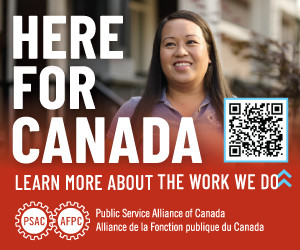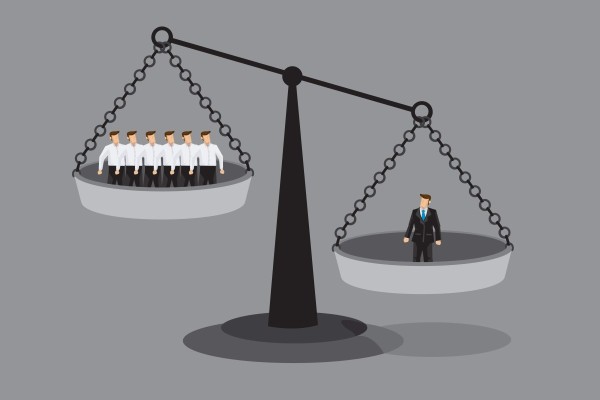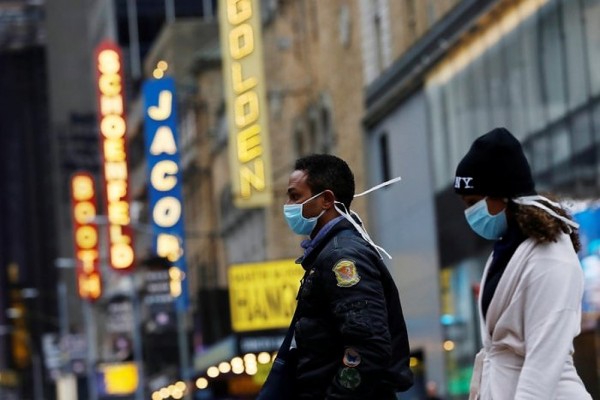Yes, you should just delete your apps
A powerful myth has been embedded in our culture: that we cannot live without the convenience of near-instant delivery

Third-party delivery apps like Uber Eats have taken control of the marketplace, losing money while getting diners used to ordering on these platforms without seeing or feeling the cost. Photo by eggbank/BlogTO.
Pre-pandemic, when I warned about the threat that third-party delivery (or 3PD) posed to restaurants, I was Chicken Little.
Few customers were aware of the profit-busting commissions, averaging 30 percent, demanded by tech companies like Uber Eats and Foodora, from restaurants that operate between a four to 12 percent margin. But even with every restaurateur complaining of this, the public wouldn’t buy it. If it didn’t make business sense, they’d say, they wouldn’t be in business. Most people seemed unaware that these companies lose hundreds of millions of dollars a year, and that their losses are subsidized by continued venture capital investments in the hopes they will one day be profitable.
March 2020, with its shift to take out and delivery, lifted the lid on this contentious relationship. With restaurants forced to focus on off-premise sales, the tightening grip of the 3PD companies became a stranglehold overnight. And soon the rallying cry of “order delivery to support your local restaurant,” segued into a public conversation about this dynamic. Within a couple months, diners became aware that ordering through 3PD companies was not good for restaurants.
While there are so many different 3PD firms, all constantly merging and acquiring each other, most operate on the same model: use technology to get between a traditional business and its customers by offering the customers a “cost-free” convenience, then ransom the customers back to the business and pass on the cost of delivery through a commission rate higher than the restaurant’s profit margin. I think that’s predatory. And it’s only possible because these companies are subsidized by a continuous stream of VC money.
Some US cities—Los Angeles, Denver, New York, San Francisco, Seattle, Chicago—placed temporary limits on commissions. Toronto dithered, the city and province passing the buck to each other until the fall.
At the same time, the exploitative nature of the “gig economy” and “independent contractor” language used by 3PD companies to avoid employing and compensating couriers fairly, became a regular fixture of the news. Following a ballot initiative in California (where these companies spent over $200 million on Proposition 22 in order to overturn a state law that would require them to treat their workers as employees), the tech consortium has promised similar campaigns everywhere.
They’ve already begun. “Flexible Work +” is the campaign name of Uber Eats’ assault on labour rights in Canada and it will be up to workers, legislators and voters to understand the stakes so we don’t fall for the tech industry’s pitch—that labour laws guaranteeing workers’ rights were written in ye olden days and shouldn’t apply to these modern, innovative business.
Similar to the rise of Amazon, Google and Facebook, the 3PD sector has leveraged a number of tools to gain a great deal of control over the hospitality industry in a relatively short amount of time. These strategies include: a lack of understanding from federal legislators; the technological speed of adaptation; plus their ability to devote venture capital funded war chests to fighting labour laws. Governments everywhere need to wise up, to learn from their mistakes in dealing with the tech companies that have already grown into monopolies or duopolies of the retail, data or media fields.
At this stage, it can’t be news that 3PD is bad for restaurants. And contrary to the often-cited reasoning that no one is forcing restaurants to participate with these companies, 3PD has taken control of the marketplace, losing money while getting diners used to ordering on these platforms without seeing or feeling the cost.
In the last five years, a powerful myth has been embedded in our culture; that we cannot live without the convenience of near-instant delivery. Before we had smartphones, how did we manage to get dinner on the table? Were we all exhausted by having to call Chinese and pizza restaurants for delivery, or miserly by only being able to choose between the two-dozen menus underneath the cutlery drawer in our never-used kitchens? Despite the notion that advertising’s success can only be measured in sales, the collective delusion that we cannot live without the convenience of third-party delivery is a huge victory for Uber Eats, DoorDash, Postmates, Grubhub and their peers. That alone is worth half of their wildly inflated valuations. The multi-billion dollar companies can’t justify their speculative value based on profits, not while they continue to post losses, even in the wake of a pandemic that was to them a gift of biblical proportions (DoorDash finished 2020 by tripling revenue and doubling losses).
We have always been busy. Italy, it could be argued, created takeaway food. At least 80 thermopolium—counters selling hot food on the go—have been discovered in the ruins of Pompeii, buried by Mount Vesuvius in 79 AD. But a sickness of our contemporary era is equating our overstuffed schedules with personal success; that our exhaustion is a virtue rather than a burden. The delivery app companies exploit this with ad campaigns promising a convenient solution, and reward, for our uniquely fast-paced lifestyles—which is a lot of nonsense. Most of us don’t work such long hours because we’re trying to cure cancer or create a masterpiece, but because our housing costs require such a greater percentage of our income than previous generations.
Oh, and ghost kitchens, while a neat iteration of how technology is changing hospitality, are no boon to first-time restaurateurs. It’s too hard to stand out in the digital marketplace without an existing brand, location or clientele. The model is really only really beneficial for unit growth to restaurants that already have multiple locations and want to expand to a new territory at a tenth the cost of a new, full-service restaurant.
The only thing certain about the future of third-party delivery is that we cannot predict the next steps from these companies. Not five years from now or even one. A decade ago they didn’t exist. Now they are more than 10.89 percent of the restaurant market and growing.
But it’s a corner of the restaurant industry where we can take simple, direct action through our choices. For diners who love their city’s restaurants and want to see them survive, to make dining choices that put money directly in the pockets of restaurants, there is something we can do.
We can stop using these apps. Delete them from our phones. I just did it. Before we could use apps to order food, did we all starve to death? True, it means that I can no longer choose dinner from two hundred different restaurants. I don’t think I ever did. Most of us order from the same half dozen places on repeat. If I really want food from a particular restaurant, I’ll call it in and pick it up.
If I find a restaurant near me that’s doing self-delivery, whether as a disaster adaptation or because they’re a pizza or Chinese restaurant that has always provided their own delivery, I’m gonna support the hell out of them. When it’s my cheat night and I’m going to indulge by eating something rich and delicious without cooking, I want the restaurant I’m ordering from to be making money.
But let’s say we’re at a friend’s home and they’re ordering dinner through some app. We don’t want to be a grinch by telling them not to. We don’t want to start by chastising them for using Grubhub. If we’re in this situation, there’s a compromise solution—tip cash. We don’t want to Google the company later to find it’s one of the many that uses tips to drivers as a deduction from the promised hourly wage (like DoorDash, which stopped the practice in 2019 following public criticism). So at the very least, let’s make sure the courier gets a solid tip and that we get it directly into their hands.
I always have cash on me. We still haven’t arrived at a cashless future society. Until then, you never know when you’re going to encounter a tow-truck driver, kidnapper, or meal courier for whom cash is still king. Deleting these apps may be difficult for some of us, hooked as we are on the convenience or routine. But the action and the way it helps restaurants is one of the simplest, most black-and-white of those in the dining sphere.
Corey Mintz is a freelance food reporter (New York Times, Globe and Mail, Eater and others), focusing on the intersection between food with labour, politics, farming, ethics and culture. His latest book is The Next Supper: The End of Restaurants as We Knew Them, and What Comes After.










